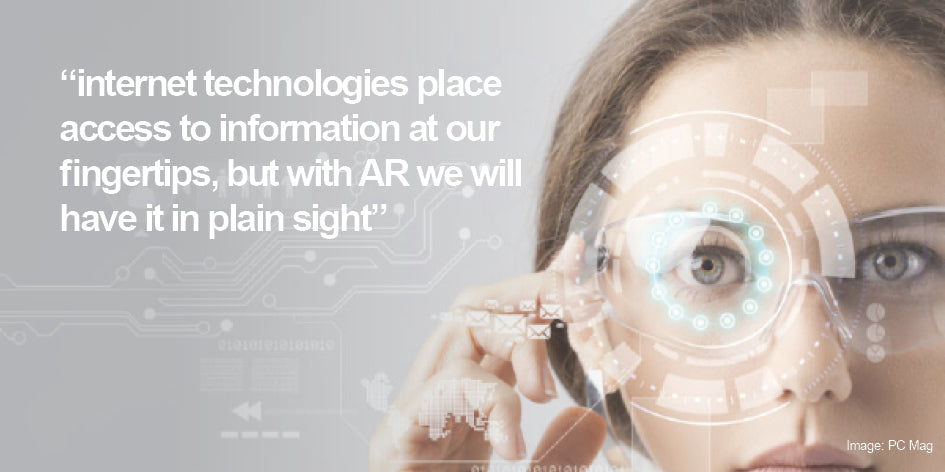This is the third post in a series of five that focuses on the disruptive potential, commercialisation and adoption of the key new technologies underpinning the Fourth Industrial Revolution.
Prior posts have considered the impact of the Internet of Things (IoT) and Artificial Intelligence, and future posts will review the similarly concurrent advances in adjacent technologies 3D Printing and Blockchain which are amplifying the scale of the transformative impact and the merging of our real and digital worlds.
Welcome to the New Reality
As organisations and consumers struggle with cognitive overload from the escalating volume and velocity of data from ever more connected devices, the new human-computer interfaces presented by Augmented Reality (AR) and Virtual Reality (VR) offer a timely panacea. Where the internet placed access to information at our fingertips, with AR we will now have it in plain sight, exactly when we need it.

Disruptive Potential of AR
AR overlays relevant data visualisations onto our familiar view of 3D reality. Given the superiority of our brains to extract conceptual information from visual input, it significantly enhances our ability to assimilate contextual information or instructions, and therefore our cognitive performance, in real time. VR, which replaces reality with a computer-generated environment, offers the promise of increasingly realistic and immersive experiences not just for gamers, but for scenario-based training and for deepening our empathy and connection to the unfamiliar.
Both technologies will transform our everyday experience of the world. Across industries, the ability for data from IoT sensors, and remote experts, to instruct, guide or collaborate on our activity in real time will disrupt centuries-old apprenticeship models, compress learning pathways, and enhance our productive capacity.
Commercialisation of AR
The value of AR is accelerating alongside both SCPs and the retrospective creation of ‘digital twins’ - digital representations of people, processes and things overlaying the IoT onto our analogue world. And as AI develops through machine learning, AR will provide humans with the intuitive interface that personalises the value of this in real time.
The underlying technology is decades old, but there are still familiar and significant barriers to overcome in realising the benefits of these new technologies. Dominant standards for both software development and content production have yet to emerge, whilst content availability is constrained by the lack of addressable eyeballs. ‘Head-mounted displays’ (HMD) and smart glasses are shaping up as the next major battleground for consumer electronics.
Market Adoption of AR
It will probably feel as natural to wear the smart glasses of the future as it is (sun)glasses today. We have already intuitively embraced the decrease in cognitive load of a ‘head-up display’ (HUD) for in-car navigation. Once hardware is desirable and accessibly priced, and content available, expect exponential adoption.
